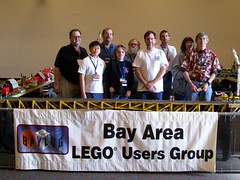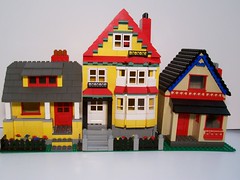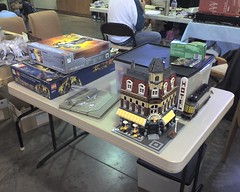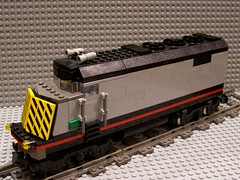One of the more impressive LEGO robots I’ve seen lately is Daniel Rojas’s Cable Car. He came to one of the BayLUG meetings recently and met some of us, and told us about the project, and when he finally posted his finished product he was kind enough to email us about it.
It’s a great model of a cable car, and a very clever robot too. Like the real deal, it has a grab-arm which goes below the track to hold on to a cable which pulls it. And it’s controlled by an RCX (Mindstorms). It even has a working emergency brake! Daniel even made a great YouTube video so we can see it in action:
If you liked that, check the rest of the pics on Daniel’s site.




















































































